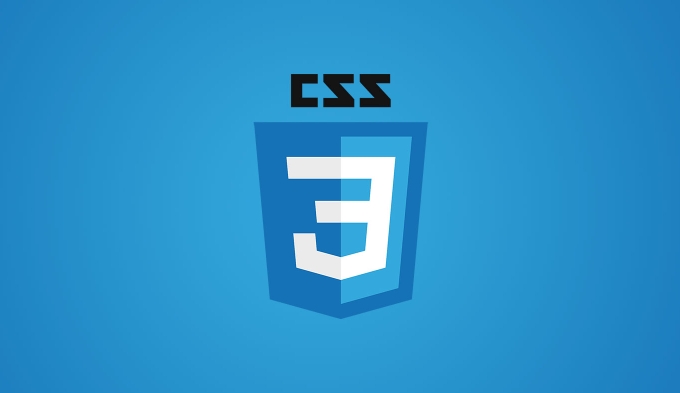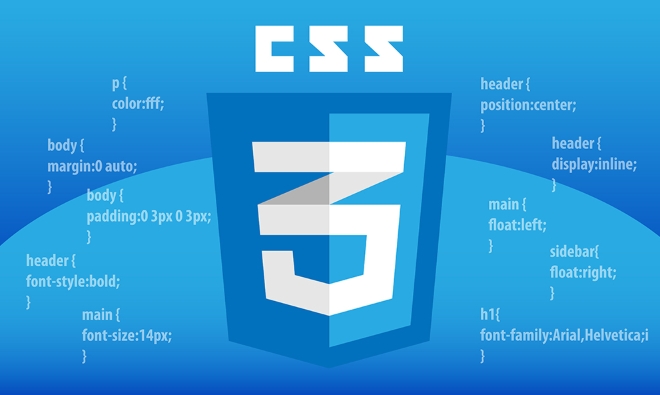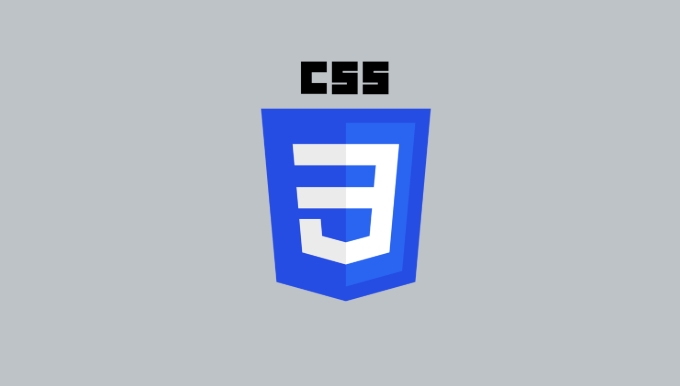The :invalid and :valid pseudo-classes in CSS are used to style form elements based on their validation state. 1. :invalid targets fields that don’t meet validation rules such as required fields being empty or incorrect email formats, allowing developers to highlight errors visually. 2. :valid applies to elements that pass validation criteria, enabling positive feedback like green borders. 3. Both pseudo-classes apply styles immediately on page load, though :user-invalid can be used for user interaction-based styling. 4. These classes work only on form elements with constraints like required, min, or max. 5. While they enhance UX with real-time feedback, they should not replace server-side validation.

When you're working with form validation in CSS, the :invalid and :valid pseudo-classes are super handy. They let you style form elements based on whether their current value meets the validation rules defined in your HTML — like required fields, email formats, or min/max values.

How :invalid Works
:invalid applies to any form element that doesn't meet its validation criteria. For example, if a field is required but empty, or an email field has the wrong format, it will match :invalid.
You can use this to give users visual feedback right away without JavaScript:

- Highlight input borders in red
- Show error messages or icons
- Add tooltips or helper text when the field is invalid
input:invalid {
border-color: red;
}Keep in mind, though, that browsers usually apply :invalid as soon as the page loads. That means required fields show up as invalid even if the user hasn’t interacted with them yet. If you don’t want that, you’ll need to combine it with other techniques like checking for :user-invalid, which only triggers after the user has tried submitting or interacting with the field (but browser support is still catching up).
How :valid Works
Opposite of :invalid, the :valid pseudo-class targets form elements that currently pass all their validation checks.

This is useful for giving positive feedback:
- Green borders or checkmarks
- Confirmation messages
- Enabling a submit button only when all fields are valid
input:valid {
border-color: green;
}Like :invalid, :valid also applies immediately on page load. So if a field isn’t required and is empty, it might be considered valid by default. This behavior makes sense because an empty optional field isn’t technically invalid — just not filled out yet.
Common Use Cases and Tips
Here are some practical ways developers use these pseudo-classes:
- Real-time form feedback – Users get immediate visual cues as they type.
-
Styling error messages – You can pair
:invalidwith adjacent labels or error containers. - Conditional styling – Style parent containers or other related elements using general sibling or child combinators.
- Accessibility enhancements – Combine with ARIA attributes to make forms more usable for screen readers.
A few things to keep in mind:
- These pseudo-classes only work on form elements with validation constraints (like
required,pattern,min,max, etc.). - Styling too aggressively can interfere with browser defaults or accessibility features.
- Always back up client-side validation with server-side checks — CSS-only validation doesn’t prevent bad data from being submitted.
So basically, :invalid and :valid offer a quick and effective way to visually reinforce form validation, making your web forms more user-friendly without needing JavaScript. Just remember, while they’re great for UX, they shouldn’t replace actual data validation on the backend.
The above is the detailed content of What is the `:invalid` and `:valid` pseudo-classes?. For more information, please follow other related articles on the PHP Chinese website!

Hot AI Tools

Undress AI Tool
Undress images for free

Undresser.AI Undress
AI-powered app for creating realistic nude photos

AI Clothes Remover
Online AI tool for removing clothes from photos.

Clothoff.io
AI clothes remover

Video Face Swap
Swap faces in any video effortlessly with our completely free AI face swap tool!

Hot Article

Hot Tools

Notepad++7.3.1
Easy-to-use and free code editor

SublimeText3 Chinese version
Chinese version, very easy to use

Zend Studio 13.0.1
Powerful PHP integrated development environment

Dreamweaver CS6
Visual web development tools

SublimeText3 Mac version
God-level code editing software (SublimeText3)
 CSS tutorial for creating loading spinners and animations
Jul 07, 2025 am 12:07 AM
CSS tutorial for creating loading spinners and animations
Jul 07, 2025 am 12:07 AM
There are three ways to create a CSS loading rotator: 1. Use the basic rotator of borders to achieve simple animation through HTML and CSS; 2. Use a custom rotator of multiple points to achieve the jump effect through different delay times; 3. Add a rotator in the button and switch classes through JavaScript to display the loading status. Each approach emphasizes the importance of design details such as color, size, accessibility and performance optimization to enhance the user experience.
 Addressing CSS Browser Compatibility issues and prefixes
Jul 07, 2025 am 01:44 AM
Addressing CSS Browser Compatibility issues and prefixes
Jul 07, 2025 am 01:44 AM
To deal with CSS browser compatibility and prefix issues, you need to understand the differences in browser support and use vendor prefixes reasonably. 1. Understand common problems such as Flexbox and Grid support, position:sticky invalid, and animation performance is different; 2. Check CanIuse confirmation feature support status; 3. Correctly use -webkit-, -moz-, -ms-, -o- and other manufacturer prefixes; 4. It is recommended to use Autoprefixer to automatically add prefixes; 5. Install PostCSS and configure browserslist to specify the target browser; 6. Automatically handle compatibility during construction; 7. Modernizr detection features can be used for old projects; 8. No need to pursue consistency of all browsers,
 Creating custom shapes with css clip-path
Jul 09, 2025 am 01:29 AM
Creating custom shapes with css clip-path
Jul 09, 2025 am 01:29 AM
Use the clip-path attribute of CSS to crop elements into custom shapes, such as triangles, circular notches, polygons, etc., without relying on pictures or SVGs. Its advantages include: 1. Supports a variety of basic shapes such as circle, ellipse, polygon, etc.; 2. Responsive adjustment and adaptable to mobile terminals; 3. Easy to animation, and can be combined with hover or JavaScript to achieve dynamic effects; 4. It does not affect the layout flow, and only crops the display area. Common usages are such as circular clip-path:circle (50pxatcenter) and triangle clip-path:polygon (50%0%, 100 0%, 0 0%). Notice
 What is the difference between display: inline, display: block, and display: inline-block?
Jul 11, 2025 am 03:25 AM
What is the difference between display: inline, display: block, and display: inline-block?
Jul 11, 2025 am 03:25 AM
Themaindifferencesbetweendisplay:inline,block,andinline-blockinHTML/CSSarelayoutbehavior,spaceusage,andstylingcontrol.1.Inlineelementsflowwithtext,don’tstartonnewlines,ignorewidth/height,andonlyapplyhorizontalpadding/margins—idealforinlinetextstyling
 Styling visited links differently with CSS
Jul 11, 2025 am 03:26 AM
Styling visited links differently with CSS
Jul 11, 2025 am 03:26 AM
Setting the style of links you have visited can improve the user experience, especially in content-intensive websites to help users navigate better. 1. Use CSS's: visited pseudo-class to define the style of the visited link, such as color changes; 2. Note that the browser only allows modification of some attributes due to privacy restrictions; 3. The color selection should be coordinated with the overall style to avoid abruptness; 4. The mobile terminal may not display this effect, and it is recommended to combine it with other visual prompts such as icon auxiliary logos.
 How to create responsive images using CSS?
Jul 15, 2025 am 01:10 AM
How to create responsive images using CSS?
Jul 15, 2025 am 01:10 AM
To create responsive images using CSS, it can be mainly achieved through the following methods: 1. Use max-width:100% and height:auto to allow the image to adapt to the container width while maintaining the proportion; 2. Use HTML's srcset and sizes attributes to intelligently load the image sources adapted to different screens; 3. Use object-fit and object-position to control image cropping and focus display. Together, these methods ensure that the images are presented clearly and beautifully on different devices.
 Demystifying CSS Units: px, em, rem, vw, vh comparisons
Jul 08, 2025 am 02:16 AM
Demystifying CSS Units: px, em, rem, vw, vh comparisons
Jul 08, 2025 am 02:16 AM
The choice of CSS units depends on design requirements and responsive requirements. 1.px is used for fixed size, suitable for precise control but lack of elasticity; 2.em is a relative unit, which is easily caused by the influence of the parent element, while rem is more stable based on the root element and is suitable for global scaling; 3.vw/vh is based on the viewport size, suitable for responsive design, but attention should be paid to the performance under extreme screens; 4. When choosing, it should be determined based on whether responsive adjustments, element hierarchy relationships and viewport dependence. Reasonable use can improve layout flexibility and maintenance.
 What are common CSS browser inconsistencies?
Jul 26, 2025 am 07:04 AM
What are common CSS browser inconsistencies?
Jul 26, 2025 am 07:04 AM
Different browsers have differences in CSS parsing, resulting in inconsistent display effects, mainly including the default style difference, box model calculation method, Flexbox and Grid layout support level, and inconsistent behavior of certain CSS attributes. 1. The default style processing is inconsistent. The solution is to use CSSReset or Normalize.css to unify the initial style; 2. The box model calculation method of the old version of IE is different. It is recommended to use box-sizing:border-box in a unified manner; 3. Flexbox and Grid perform differently in edge cases or in old versions. More tests and use Autoprefixer; 4. Some CSS attribute behaviors are inconsistent. CanIuse must be consulted and downgraded.






